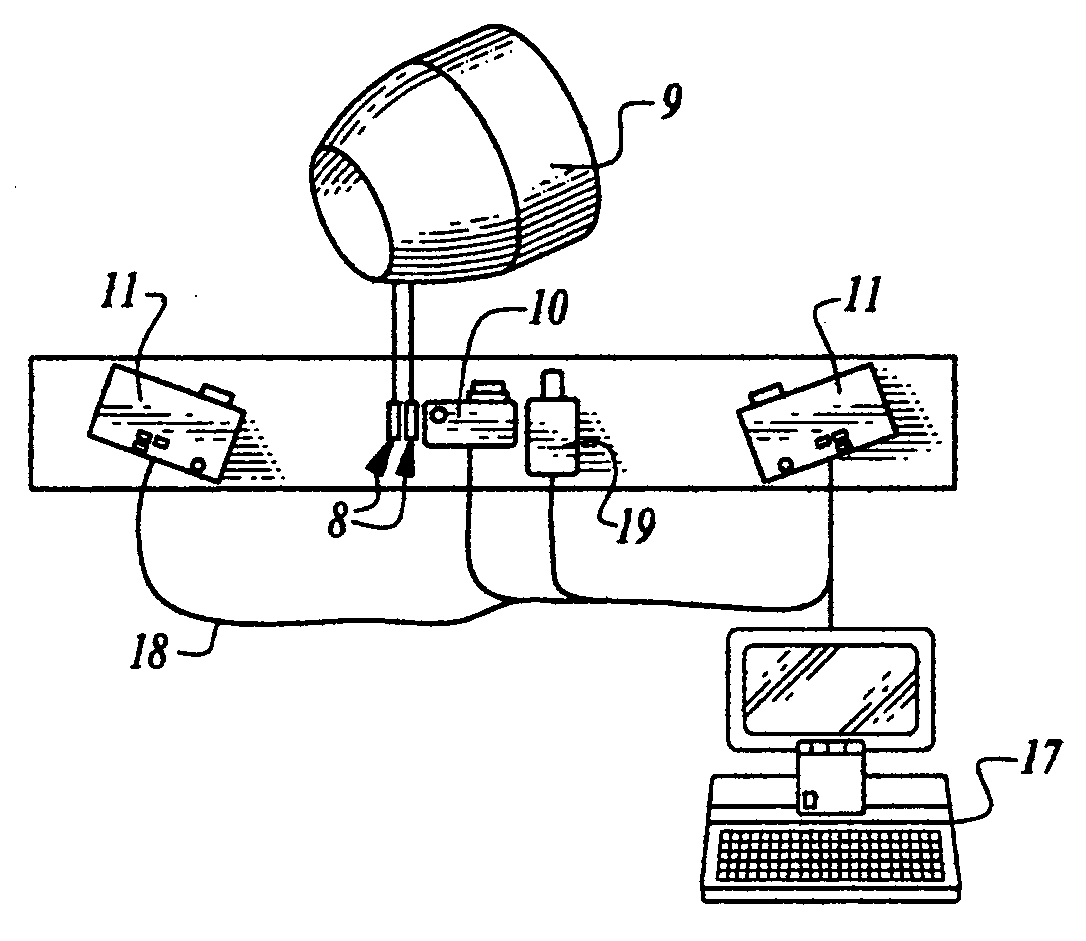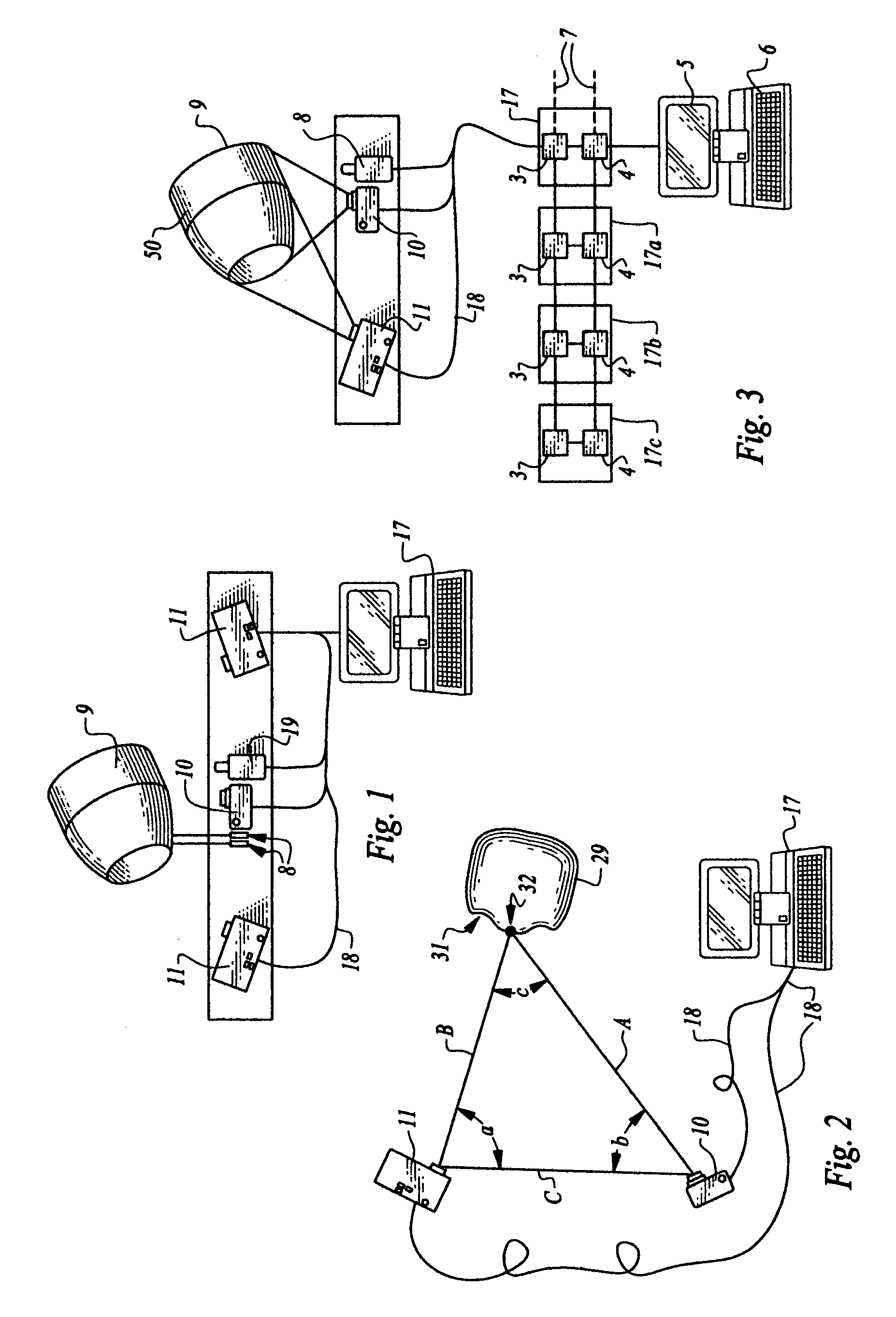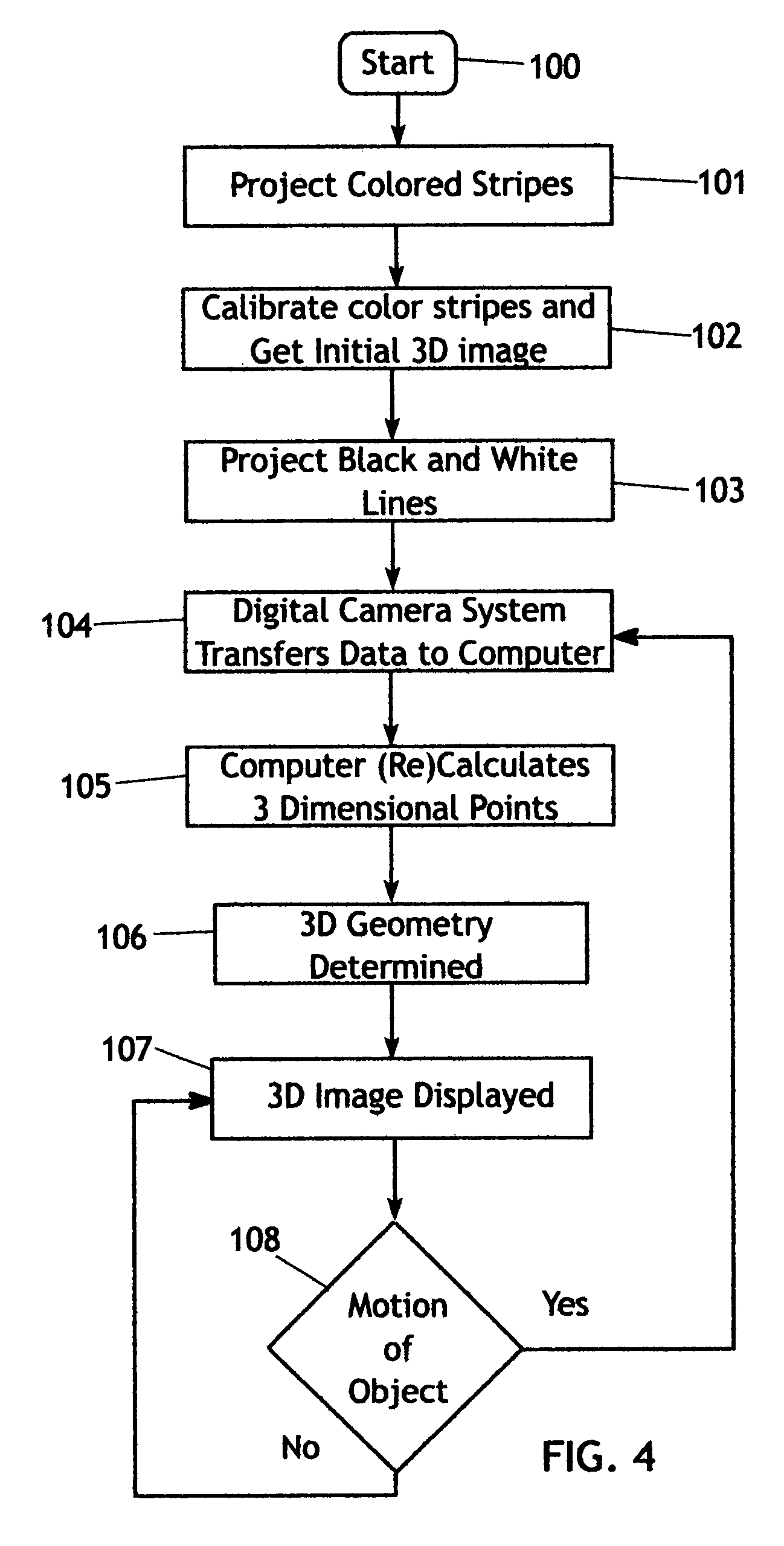Method and apparatus for dynamic space-time imaging system
a dynamic space-time imaging and apparatus technology, applied in the field of dynamic space-time imaging systems, can solve the problems of difficult to achieve stereoscopic profiling with accurate detailed measurements of three-dimensional objects, involving a quite expensive apparatus, and finite (and relatively long) time for all points to be illuminated and surveyed
- Summary
- Abstract
- Description
- Claims
- Application Information
AI Technical Summary
Benefits of technology
Problems solved by technology
Method used
Image
Examples
Embodiment Construction
[0032] The present invention generally comprises a method for generating a three dimensional map of the surface of an object, and analyzing the dimensional data to examine the object in useful ways. Referring to FIG. 1, the method involves providing a pair of projectors 11, each of the projectors directed to project a pattern of colored lines on an object 9. A single flash projector may be composed of a flash lamp and a patterned source or a digital projector. The flash lamp provides high intensity light for a short time. This has two advantages: it allows the fast study of mechanical position without image blurring and it avoids heating the object while still providing enough light to illuminate the object. The projectors are separated and spaced to illuminate differing aspects of the object. A digital camera 10 is directed at the object 9 to acquire images of the object, and the configuration of the projected patterns of colored (or black and white) lines on the surface of the obj...
PUM
 Login to View More
Login to View More Abstract
Description
Claims
Application Information
 Login to View More
Login to View More - R&D
- Intellectual Property
- Life Sciences
- Materials
- Tech Scout
- Unparalleled Data Quality
- Higher Quality Content
- 60% Fewer Hallucinations
Browse by: Latest US Patents, China's latest patents, Technical Efficacy Thesaurus, Application Domain, Technology Topic, Popular Technical Reports.
© 2025 PatSnap. All rights reserved.Legal|Privacy policy|Modern Slavery Act Transparency Statement|Sitemap|About US| Contact US: help@patsnap.com



